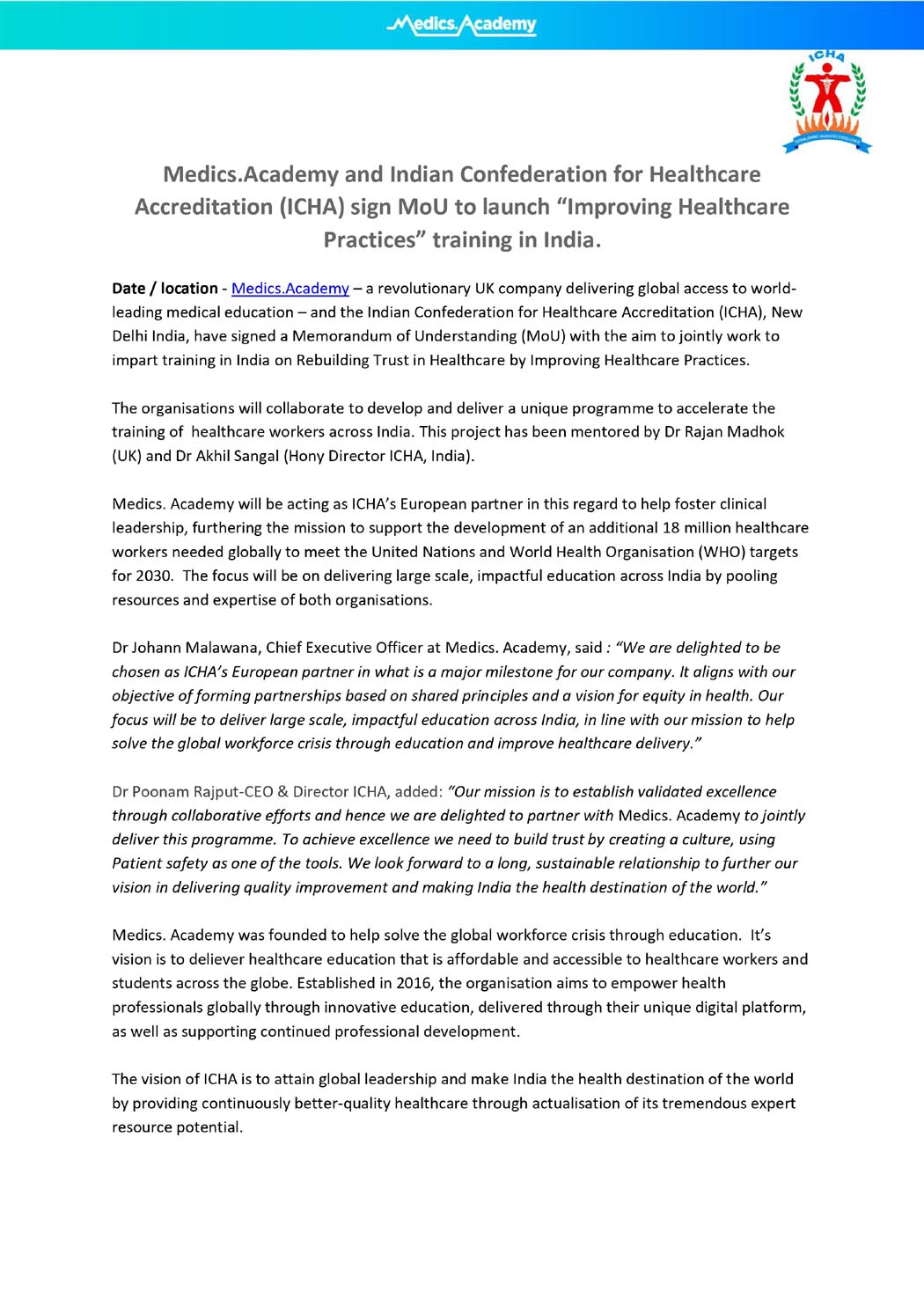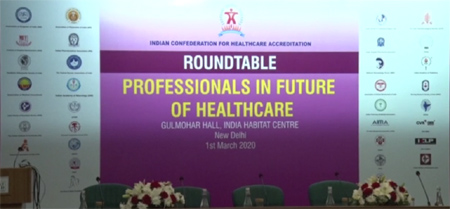Prioritizing Patient Safety

As per WHO 1 in 10 patient receive harm during the treatment process, 4 out of 10 patients are harmed in the primary and ambulatory settings (this was in USA only); up to 80% of harm in these settings can be avoided. Hundreds of million people worldwide suffer from infections acquired in hospitals. There is a 1 in 1 000 000 chance of a traveller being harmed while in an aircraft. In comparison, there is a 1 in 300 chance of a patient being harmed during health care.
Evidently promoting a culture of patient safety in healthcare is of utmost importance. There is a need to promote open communication for learning from errors and to emphasize the importance of patient safety
Patient safety has now been recognized as a global health priority.At the 72nd World Health Assembly held in May 2019, 194 countries came together to establish 17 September as WORLD PATIENT SAFETY DAY. From 2019 onwards, this day shall be dedicated to generate awareness, educate and engage the public across the world about the issues pertaining to patient safety.The establishment of an annual World Patient Safety Day will give an opportunity to providers, seekers and managers of health care services to join a global platform and enhance understanding and take action to promote a culture of safety in health care. The origin of the day is firmly grounded in the fundamental principle of medicine – First, to do no harm.
The Indian Context
In tandem with the global concern on patient safety, the Ministry of Health and Family Welfare, Government of India has taken an initiative for patient safety by introducing National Patient Safety Implementation Framework (2018-2025)(NPSIF)which emphasizes patient safety as the focal point of healthcare. NPSIF is intended to be adopted by both public and private sectors to address the various issues arising while providing healthcare services.
Patient safety – It is a fundamental element of health care and is defined as a freedom for a patient from unnecessary harm or potential harm associated with provision of health care.
NPSIF deals with:
- Safe surgical care and safe childbirth
- Injection safety
- Blood safety
- Medication safety
- Medical device safety
- Safe organ, tissue and cell transportation and donation
- bio-medical waste management
- prevention of healthcare associated infections and much more.
- Patient safety research
Goal & Scope:
The goal of the NPSIF is to improve patient safety at all levels of health care across all modalities of health care provision, including prevention, diagnosis, treatment and follow up within overall context of improving quality of care and progressing towards UHC (Universal Health Coverage) in coming decade.
The scope of patient safety applies to all national programmes and envisages collaboration of wide range of national international stakeholders both within and outside health sector. NPSIF applies to national and sub-national levels as well as to public and private sectors.
Data Courtesy: WHO
https://www.nhp.gov.in/national-patient-safety-implementation-framework-(npsif)_pg
Type of risks during treatment
- Wrong site surgery cause complications approximately 1 in 113,000 surgical procedures as per Malpractice database data
- Unsafe surgical care procedures cause complications in up to 25% of patients. Almost 7 million surgical patients suffer significant complications annually, 1 million of whom die during or immediately following surgery
- Medication errors are a leading cause of injury and avoidable harm in health care systems: globally, the cost associated with medication errors has been estimated at US$ 42 billion annually
- Infections acquired in hospitals or Health care-associated infections occur in 7 and 10 out of every 100 hospitalized patients in high-income countries and low- and middle-income countries respectively
- Diagnostic errors occur in about 5% of adults in outpatient care settings, more than half of which have the potential to cause severe harm. Most people will suffer a diagnostic error in their lifetime
- Unsafe injections practices account for a burden of harm estimated at 9.2 million years of life lost to disability and death worldwide (known as Disability Adjusted Life Years (DALYs))
- Unsafe transfusion practices expose patients to the risk of adverse transfusion reactions and the transmission of infections. Data on adverse transfusion reactions from a group of 21 countries show an average incidence of 8.7 serious reactions per 100 000 distributed blood components
- Radiation errors involve overexposure to radiation and cases of wrong-patient and wrong-site identification. A review of 30 years of published data on safety in radiotherapy estimates that the overall incidence of errors is around 15 per 10 000 treatment courses.
- Sepsis is frequently not diagnosed early enough to save a patient’s life. Because these infections are often resistant to antibiotics, they can rapidly lead to deteriorating clinical conditions, affecting an estimated 31 million people worldwide and causing over 5 million deaths per year.
- Venous thromboembolism (blood clots) is one of the most common and preventable causes of patient harm, contributing to one third of the complications attributed to hospitalization. Annually, there are an estimated 3.9 million cases in high-income countries and 6 million cases in low- and middle-income countries.
Data Courtesy: WHO





